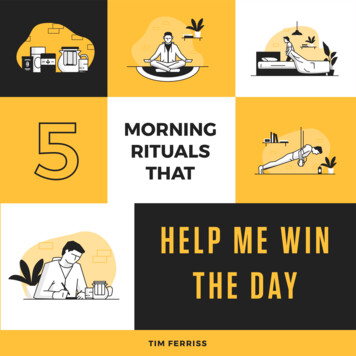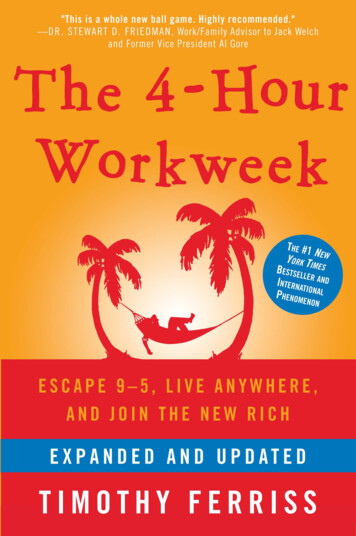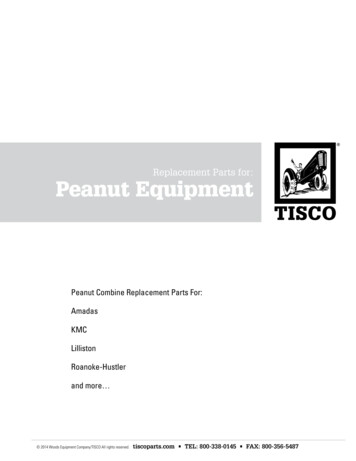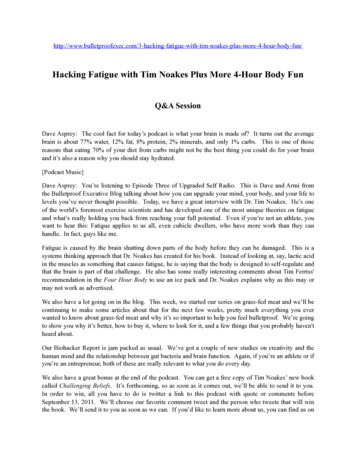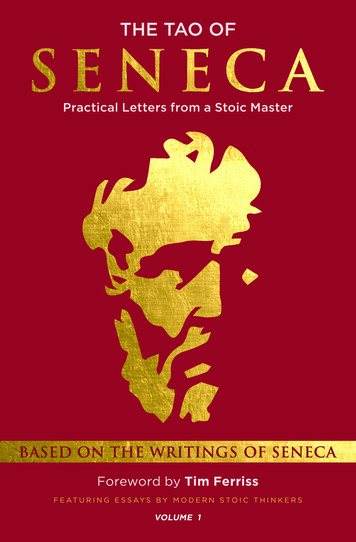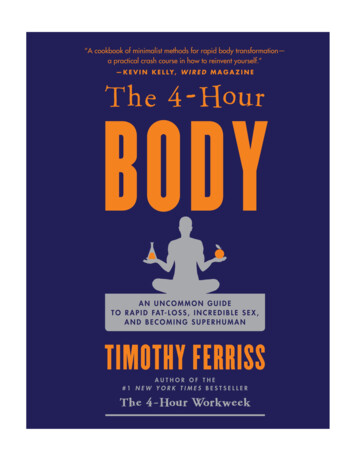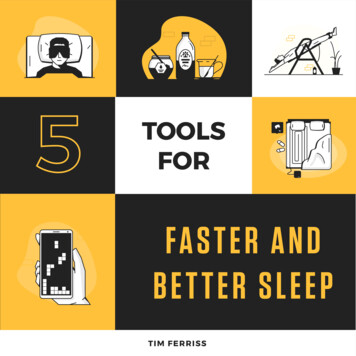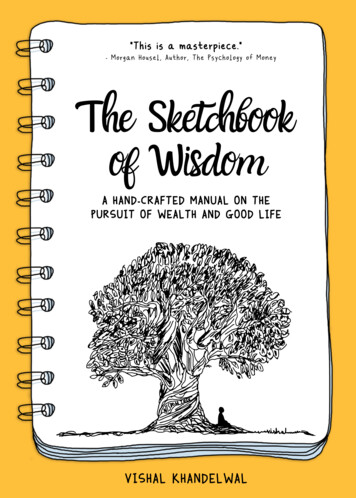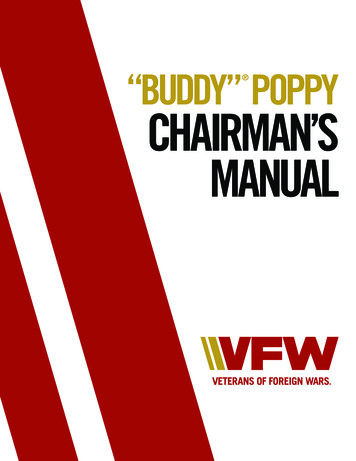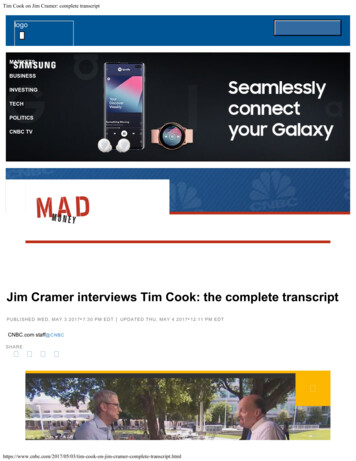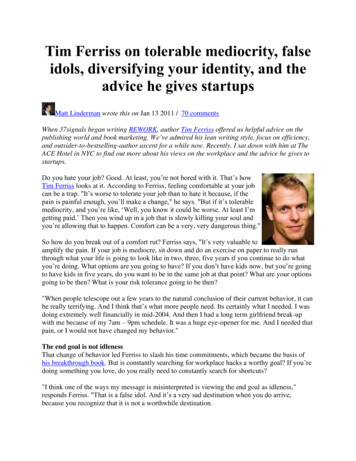
Transcription
Tim Ferriss on tolerable mediocrity, falseidols, diversifying your identity, and theadvice he gives startupsMatt Linderman wrote this on Jan 13 2011 / 70 commentsWhen 37signals began writing REWORK, author Tim Ferriss offered us helpful advice on thepublishing world and book marketing. We’ve admired his lean writing style, focus on efficiency,and outsider-to-bestselling-author ascent for a while now. Recently, I sat down with him at TheACE Hotel in NYC to find out more about his views on the workplace and the advice he gives tostartups.Do you hate your job? Good. At least, you’re not bored with it. That’s howTim Ferriss looks at it. According to Ferriss, feeling comfortable at your jobcan be a trap. "It’s worse to tolerate your job than to hate it because, if thepain is painful enough, you’ll make a change," he says. "But if it’s tolerablemediocrity, and you’re like, ‘Well, you know it could be worse. At least I’mgetting paid.’ Then you wind up in a job that is slowly killing your soul andyou’re allowing that to happen. Comfort can be a very, very dangerous thing."So how do you break out of a comfort rut? Ferriss says, "It’s very valuable toamplify the pain. If your job is mediocre, sit down and do an exercise on paper to really runthrough what your life is going to look like in two, three, five years if you continue to do whatyou’re doing. What options are you going to have? If you don’t have kids now, but you’re goingto have kids in five years, do you want to be in the same job at that point? What are your optionsgoing to be then? What is your risk tolerance going to be then?"When people telescope out a few years to the natural conclusion of their current behavior, it canbe really terrifying. And I think that’s what more people need. Its certainly what I needed. I wasdoing extremely well financially in mid-2004. And then I had a long term girlfriend break-upwith me because of my 7am – 9pm schedule. It was a huge eye-opener for me. And I needed thatpain, or I would not have changed my behavior."The end goal is not idlenessThat change of behavior led Ferriss to slash his time commitments, which became the basis ofhis breakthrough book. But is constantly searching for workplace hacks a worthy goal? If you’redoing something you love, do you really need to constantly search for shortcuts?"I think one of the ways my message is misinterpreted is viewing the end goal as idleness,"responds Ferriss. "That is a false idol. And it’s a very sad destination when you do arrive,because you recognize that it is not a worthwhile destination.
“Idleness is a false idol.”"For me, the objective has always been: How do you improve per-hour output to the greatestextent possible? And how do you concurrently design the lifestyle that you want to have?Because I do believe that life is intended to be enjoyed. For many people, they love what theydo, but they don’t want to do it 80 hours a week. For them, it would be dialing back from 80 to40, let’s just say. Whether that’s a teacher, pastor, or writer — just being more efficient andeffective with your time."In the second category, you have people who don’t love what they do. It comes back to thatcomfortable mediocrity. And for them, it’s about replacement. It’s not about reduction. For them,the goal is to get to the point where they’re doing what they love. And that is the objective ofeverything that I teach. It’s not to be idle, but it’s to get to the point where you control your timeand allocate it to the things that will give you the most joy and also provide the greatest impact.For each person, that will be very individual."Diversifying your identityWith his latest book (#1 bestseller The 4-Hour Body), Ferriss is evolving out of being the "The4-Hour Workweek" guy. He says, "I don’t want to put out ‘The 3 1/2 Hour Workweek’ or ‘The3-Hour Workweek.’ It would be boring for me to produce and it would be boring, I think, formany people to consume. So, ‘The 4-Hour Body’ for me, was the opportunity to focus on whatI’ve been obsessed with for a much longer time than time management."A big part of it was diversifying my identity. I didn’t want to paint myself into a cornerwhere I felt obligated to maintain a certain level of ‘success.’ Even if ‘The 4-Hour Body’were to do far worse than ‘The 4-Hour Workweek,’ I felt this was a necessary step for my ownpersonal preservation."I also wanted to diversify the public perception of my expertise. I want people, hopefully, toread my material because of the way I deconstruct problems, not because of the specific subjectmatter. I would rather be in the same vein as Malcolm Gladwell or George Plimpton thansomeone who’s known for just being an expert in one subject matter."Ferriss has also spread out by becoming an angel investor (StumbleUpon, Digg, and Twitteramong others) and advisor to startups. He gives don’t-put-all-your-ego-in-one-basket advice tothe people he works with too. "One of the recommendations that I make to many of the startupfounders I advise is to have at least three or four areas of interest outside the business," heexplains. "Don’t become a Dow Joneser, someone whose mood and self-worth goes up or downdependent on the Dow Jones, which you have no control over."If your entire ego and identity is vested in your startup, where there are certainly factors outsideof your control, you can get into a depressive funk that affects your ability to function. So, youshould also, let’s say, join a rock climbing gym. Try to improve your time in the mile. Something
like that. I recommend at least one physical activity. Then even if everything goes south — youhave some horrible divorce agreement with your co-founder — if you had a good week and set apersonal record in the gym or on the track or wherever, that can still be a good week."According to Ferriss, embracing diversity can also be an important step for starters looking toenter a new arena. "For people who are considering becoming an entrepreneur and taking theplunge, if their identity is vested in being a lawyer, being a graphic designer, it can be veryharrowing and terrifying. And I know it was for me, to make the jump into sacrificing some ofthat to pursue an entrepreneurial venture."But it doesnt have to be an all-or-nothing wager. You don’t have to sacrifice all of one to havethe other. I think, for most people, it makes a lot of sense to moonlight and to test the waters for aperiod of time until you have income coming in, and you’re confident that you have what’srequired — not only financially, but psychologically — to be an entrepreneur."Plus, slowly segueing is much less intimidating than making a big jump. "’The 4-HourWorkweek’ is still out there. I still write on these topics. I haven’t gone cold turkey from one tothe other. But I am slowly segueing into a broader selection of subject matter. And I think that’svery applicable to many people who are making a jump from a company or employment to selfemployment, or from simply one startup to another, or from one industry to another. I thinkensuring that you diversify your identity is very, very helpful — and it’s a big safety net."How to measure dataFerriss famously used Google AdWords and in-store A/B testing to come up with the title to hisfirst book [Full title: "The 4-Hour Workweek: Escape 9-5, Live Anywhere, and Join the NewRich"].He took 6 prospective titles that everyone could live with: including ‘Broadbandand White Sand’, ‘Millionaire Chameleon’ and ‘The 4-Hour Workweek’ anddeveloped a Google Adwords campaign for each. He bid on keywords related tothe book’s content including ‘401k’ and ‘language learning’: when those keywordsformed part of someone’s search on Google the prospective title popped up as aheadline and the advertisement text would be the subtitle. Ferriss was interested tosee which of the sponsored links would be clicked on most, knowing that he neededhis title to compete with over 200,000 books published in the US each year. At theend of the week, for less than 200 he knew that "The 4-Hour Workweek" had thebest click-through rate by far and he went with that title.His experimentation didn’t stop there, he decided to test various covers by printingthem on high quality paper and placing them on existing similar sized books in thenew non-fiction rack at Borders, Palo Alto. He sat with a coffee and observed,
learning which cover really was most appealing.What advice does he give to the businesses he advises when it comes to studying data? "Dontmeasure too many things," he says. "People often become overwhelmed with a deluge of databecause they’re looking at 1,500 variables. And that can be paralyzing because you end upsitting there looking at your analytics program all day long as opposed to doing the moreuncomfortable thing that you should be doing, like calling that big customer. And usually, themost uncomfortable thing to do is the one that people need to act on soonest.“Usually, the most uncomfortable thing to do is the one that people need to act onsoonest.”"I’ll give you an example of how you might think about this. When I was testing the subtitle forthe ‘Four-Hour Body,’ there were dozens of different subtitles. And I tested first with 50 peoplewho knew how to market. They were very top-tier, world-class marketers. They came back withwinner number one, number two, etc."Then I wanted to also test the response to those headlines by my readers, using Twitter andFacebook. But those didn’t match at all; What the marketers liked and the responders atFacebook and Twitter liked were not the same."I wanted to ensure some degree of statistical significance, so then I polled once again, askingabout 5,000 people two different things. ‘What’s your first choice?’ had five different options.And then I said, ‘What’s your second choice?’ and I had another five options."What I found is that people over-analyzed their first response. They were too intellectual aboutit. It didn’t reflect the knee-jerk response. And then for the ‘What is your second choice?,’ thefavorite second choice was more than 50 percent a single answer."And so, I ended up tweaking that second response and putting it back into the group for the firstfive. It ended up being the best performing. And that [‘An Uncommon Guide to Rapid Fat-Loss,Incredible Sex, and Becoming Superhuman’] is the title we ended up using."One killer featureWhen working with startups, Ferriss sees one problem popping up over and over. "The biggestweakness I see is companies getting focused on implementing new features," he says. "That’s thebiggest waste of time that I see. They have a viable product that people are paying for andinstead of identifying their cheapest avenue for acquiring profitable customers or focusing onpolishing the product they already have, they focus on adding ten new features.
"Mike Maples is one of the angel investors I most respect in Silicon Valley. He says the startupthat perfects their one feature and is the best at that is usually the startup that wins. It’s not thestartup that’s an 8 out of 10 on 10 features. It is the startup that is 10 out of 10 on one feature —that just kills it. And you see it over and over again. They might have other features, but theyabsolutely kill it on one feature."And I think that’s where many startups get derailed. They feel like they are not profitableenough, because they lack just one more feature. They have people asking for this one feature.And, in some cases, it makes sense if everyone is bitching about something to fix it. But if youare constantly chasing the vocal minority, you are never going to be done building your product.And you will constantly be a 5 out of 10 on all of your features and you will run out of money.Or you will just have a product that really isn’t that awesome. That’s a pretty shitty fate too.Focusing on just one or two features is really important."“If you are constantly chasing the vocal minority, you are never going to be donebuildingyour product.”Responding to criticsWith success comes critics, and Ferriss has collected his fair share of them. Many find hisoutlandish claims troublesome. He laughs when I read him this comment from a Hacker Newsthread:Tim’s Next Book: Go to heaven in just 4 hours a day.He’ll show you how to guarantee entrance into heaven when you pass into thebeyond, no matter what sins are committed in real life through a combination ofZen, Buddhism, Christianity, and Judaism.So how does he feel about people who view him as a snake oil salesman? "I think people shouldbe skeptical," he says. "I’m sure I have a few things wrong in the book, without a doubt. But Iwould say: Look at the data. I’m not asking you to just trust me and take my opinion. I have data."The vast majority of people who agree with you, or benefit from your product or book, will notsay anything. Then there’s a small minority who will praise you. And then there’s a much morevocal minority who will be the people who absolutely hate not so much the product, butwhatever they believe you stand for. If there’s something factual that I feel I need to respond to,I’ll respond. But if it’s just ‘this guy’s a bullshit artist,’ then I don’t view that as worthy of alegitimate answer."
And what’s on the agenda for his next book? "I don’t know if I’ll ever do another book," he says."I’m actually eager to try a different portion of my brain. So maybe a screenplay or fiction. I’mnot convinced that I’ll be good at either of those things, but I’d like to try something new."Sounds like more diversifying is on the way.Related:Tim Ferriss explains how “The 4-Hour Body” came to life with Basecamp and Highrise [ProductBlog]The Four Hour Body: Lessons Learned From Tim Ferriss’ Book Launch [The Creative Penn]Kevin Rose and Tim Ferriss Discuss Angel Investing and Naming Companies[fourhourworkweek.com]Matt Linderman wrote this on Jan 13 2011 There are 70 comments.About Matt LindermanNow: The creator of Vooza, "the Spinal Tap of startups." Previously: Employee#1 at 37signals and co-author of the books Rework and Getting Real.Read all of Matt Linderman’s posts, and follow Matt Linderman on Twitter.
With his latest book (#1 bestseller The 4-Hour Body), Ferriss is evolving out of being the "The 4-Hour Workweek" guy. He says, "I don’t want to put out ‘The 3 1/2 Hour Workweek’ or ‘The 3-Hour Workweek.’ It woul
